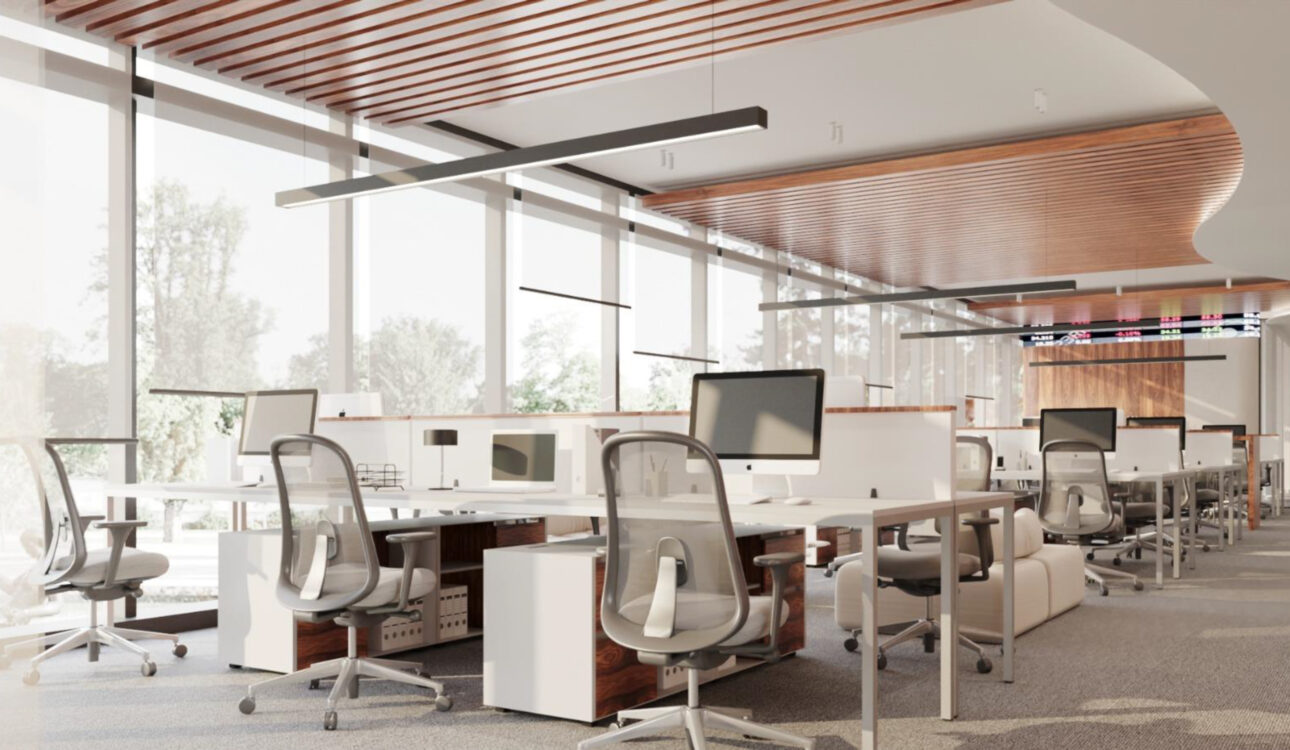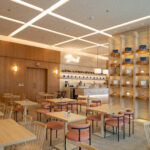Introduction
Tips and Ideas for Creating a High-Performance Workspace: Creating a high-performance workspace is about designing an environment that enhances productivity, creativity, and well-being. A well-thought-out workspace can make a significant difference in how we perform daily tasks, stay motivated, and maintain a healthy work-life balance. An efficient workspace minimizes distractions, optimizes ergonomics, and uses technology to streamline work processes. By investing in the right tools and setup, individuals and organizations can improve efficiency and overall performance. A well-designed workspace not only boosts productivity but also contributes to mental and physical health. Proper ergonomics reduce the risk of injury, while a pleasant environment can reduce stress and increase job satisfaction.
Designing Your Workspace
Ergonomics
Importance of Ergonomic Furniture
Ergonomic furniture is crucial in preventing work-related injuries and strains. Investing in a good chair, adjustable desk, and proper monitor setup can significantly impact comfort and health.
Choosing the Right Desk and Chair
Select a desk that fits your work style and a chair that supports good posture. Look for adjustable features to customize the fit to your body.
Monitor Placement
Position your monitor at eye level to avoid neck strain. Ensure it is at a comfortable distance to prevent eye strain.
Lighting
Natural vs. Artificial Lighting
Natural light is ideal for reducing eye strain and boosting mood. When natural light isn’t available, use full-spectrum bulbs that mimic daylight.
Optimal Lighting Solutions
Combine ambient, task, and accent lighting to create a balanced environment. Use desk lamps for focused tasks and overhead lighting for general illumination.
Color Psychology
Influence of Colors on Mood and Productivity
Colors can influence our emotions and efficiency. Blue promotes calm and focus, while yellow stimulates creativity. Green is balancing and restful for the eyes.
Recommended Colors for Workspaces
Consider using a palette that combines calming and stimulating colors. Neutral bases with pops of color can create a harmonious and productive atmosphere.
Noise Control
Impact of Noise on Focus
Excessive noise can be a significant distraction, reducing productivity and increasing stress levels.
Soundproofing Techniques
Use sound-absorbing materials like carpets, curtains, and acoustic panels. White noise machines or noise-canceling headphones can also help.
Technology and Tools
Essential Gadgets
Must-Have Tech for a Modern Workspace
Equip your workspace with essential gadgets like a high-quality computer, a reliable printer, and ergonomic accessories like a keyboard and mouse.
Importance of High-Speed Internet
A fast and reliable internet connection is crucial for seamless work, especially for tasks involving large files or video conferencing.
Software and Applications
Productivity Apps
Apps like Todoist, Evernote, and Rescue time can help manage tasks and time effectively.
Collaboration Tools
Tools like Slack, Microsoft Teams, and Asana facilitate communication and project management.
Project Management Software
Platforms like Trello, Jira, and Monday.com help organize and track project progress.
Organization Tools
Digital vs. Physical Organization Tools
Use a combination of digital tools like cloud storage and physical tools like filing cabinets to keep your workspace tidy.
Filing Systems and Storage Solutions
Implement a clear filing system for both digital and physical documents. Use labeled folders and storage boxes to keep everything in order.
Personalizing Your Workspace
Personal Touches
Incorporating Personal Items
Add personal items like photos, mementos, or a favorite mug to make your workspace feel more inviting and comfortable.
Benefits of Personalization
Personalizing your space can boost morale and make you feel more connected to your work environment.
Plants and Greenery
Health Benefits of Indoor Plants
Plants improve air quality, reduce stress, and increase productivity. They also add a touch of nature to your workspace.
Best Plants for Office Environment
Choose low-maintenance plants like succulents, spider plants, or snake plants that thrive indoors with minimal care.
Inspirational Decor
Motivational Quotes and Artwork
Display quotes, posters, or artwork that inspire and motivate you. These can provide a mental boost and keep you focused on your goals.
Creating an Inspiring Atmosphere
Incorporate elements that reflect your personality and aspirations. A visually stimulating environment can enhance creativity and enthusiasm.
Health and Wellness in the Workspace
Promoting Physical Health
Importance of Movement and Stretching
Incorporate regular breaks to stand, stretch, and move around. This helps prevent stiffness and promotes circulation.
Sit-Stand Desks and Active Sitting Solutions
Alternating between sitting and standing can reduce the risks associated with prolonged sitting. Consider using a sit-stand desk or active seating options like stability balls.
Mental Health Considerations
Stress Reduction Techniques
Practice stress management techniques like deep breathing, meditation, or short walks to clear your mind and reduce anxiety.
Mindfulness and Relaxation Practices
Incorporate mindfulness practices like meditation apps or relaxation exercises to stay grounded and focused.
Healthy Eating
Snacks and Meals for Sustained Energy
Choose healthy snacks like nuts, fruits, and yogurt. Plan balanced meals to maintain steady energy levels throughout the day.
Hydration Tips
Keep a water bottle at your desk to stay hydrated. Drinking plenty of water helps maintain focus and energy.
Efficient Workflow Management
Time Management Strategies
Prioritization Techniques
Use methods like the Eisenhower Matrix to prioritize tasks based on urgency and importance.
Pomodoro Technique
Break work into intervals, typically 25 minutes of focused work followed by a 5-minute break, to maintain productivity.
Task Management
To-Do Lists and Checklists
Create daily to-do lists to keep track of tasks and deadlines. Checklists can help ensure nothing is overlooked.
Effective Delegation
Delegate tasks when possible to balance workload and focus on high-priority activities.
Reducing Distractions
Identifying Common Distractions
Recognize and address common distractions such as social media, phone notifications, or unnecessary meetings.
Creating a Distraction-Free Environment
Set boundaries, use productivity tools, and create a dedicated workspace to minimize interruptions.
Collaborative Workspaces
Open vs. Closed Workspaces
Pros and Cons
Open workspaces encourage collaboration but can be noisy. Closed spaces offer privacy but can isolate team members.
Finding the Right Balance
Create a hybrid workspace with both open and closed areas to cater to different work styles and tasks.
Meeting Spaces
Designing Effective Meeting Rooms
Equip meeting rooms with comfortable seating, good lighting, and necessary technology like projectors or video conferencing tools.
Technology for Seamless Meetings
Use platforms like Zoom, Google Meet, or Microsoft Teams for efficient virtual meetings. Ensure reliable internet and proper equipment setup.
Virtual Collaboration
Tools for Remote Teams
Leverage tools like Slack, Trello, and Zoom to facilitate communication and collaboration among remote team members.
Best Practices for Virtual Meetings
Set clear agendas, use video for better engagement, and ensure everyone has an opportunity to contribute.
Sustainability and Eco-Friendly Practices
Sustainable Office Supplies
Eco-Friendly Product Choices
Opt for recycled paper, refillable pens, and other sustainable office supplies to reduce environmental impact.
Energy Efficiency
Reducing Energy Consumption
Implement energy-saving practices like turning off equipment when not in use and using energy-efficient lighting.
Implementing Green Energy Solutions
Consider renewable energy sources like solar panels to power your workspace sustainably.
Recycling and Waste Reduction
Office Recycling Programs
Set up recycling stations and educate employees on proper recycling practices.
Minimizing Waste
Encourage digital documentation to reduce paper usage and implement a waste reduction plan.
Future Trends in Workspaces
Smart Offices
Integration of Smart Technology
Incorporate smart technology like IoT devices, smart lighting, and automated systems to enhance efficiency and comfort.
Future-Proofing Your Workspace
Stay updated with technological advancements and invest in scalable solutions to ensure your workspace remains relevant.
Remote and Hybrid Work Models
Designing for Flexibility
Create adaptable workspaces that can easily transition between remote, hybrid, and in-office setups.
Supporting Remote Workers
Provide remote employees with the tools and resources they need to maintain productivity and engagement.
Wellness-Centered Workspaces
Emphasis on Health and Well-being
Design workspaces that prioritize health and well-being, incorporating elements like ergonomic furniture, natural light, and relaxation areas.
Innovative Wellness Solutions
Explore wellness programs, mental health support, and physical activity initiatives to create a holistic work environment.
Conclusion
Creating a high-performance workspace involves thoughtful design, the right tools, and a focus on health and well-being. By addressing ergonomics, lighting, personalization, and technology, you can enhance productivity and job satisfaction. Regularly assess and update your workspace to ensure it continues to meet your needs. Stay informed about new trends and technologies to keep your environment efficient and inspiring. A high-performance workspace is more than just a physical setup; it reflects your commitment to productivity, health, and personal growth. Invest time and resources into creating an environment that supports your best work.






